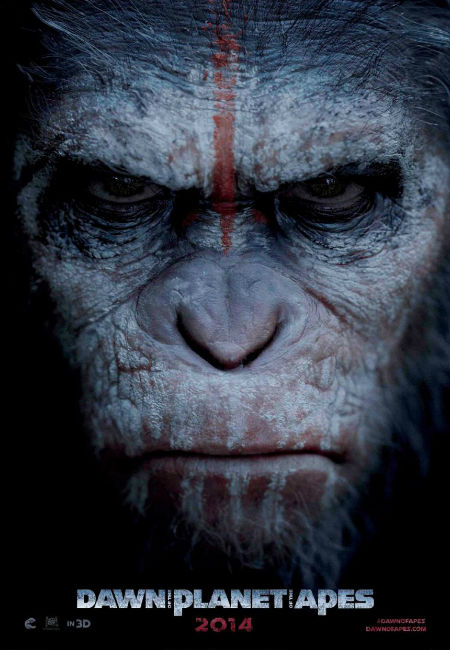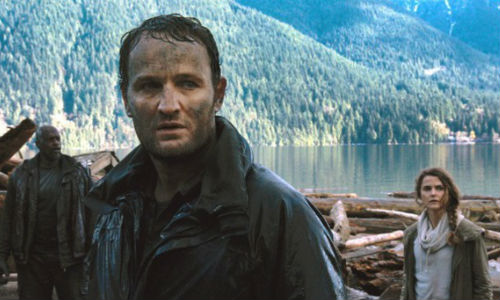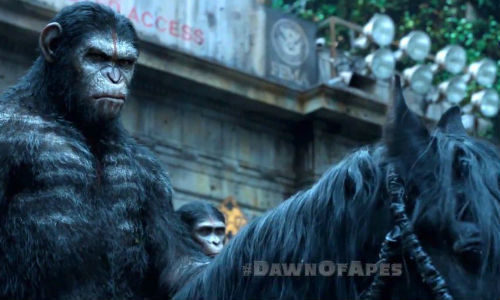
Being both a blockbuster and a sequel should have, by the usual standards of slapdash Hollywood out to make a quick buck, left Dawn of the Planet of the Apes a doubly-cursed, slathering mess of incoherent plotting, poorly-expressed ideas and sub-standard acting.
And yet, thanks to a nuanced, well-paced script by Mark Bomback, Rick Jaffa and Amanda Silver (which by all accounts went through some major changes just weeks prior to shooting), inspired performances most particularly by Andy Serkis as the leader of the apes, Caesar (give this man an Oscar now please) and masterful direction by Cloverfield‘s Matt Reeves, it is none of these things.
In fact, it is that rare beast that can stand proudly, head held high, next to its predecessor, Rise of the Planet of the Apes, the first in a modern re-imagining of the classic movie franchise which came out in 2011, and reminded anyone with even a passing interest in cinema that it is possible to successfully combine big “I” ideas with an action-oriented movie.
(There is a touching scene near the end of Dawn … that is a well-executed and genuinely moving reminder of the close relationship between Caesar and Will Rodman (James Franco), the closest thing the apes’ leader had to a father.)
The key, of course, was not letting the ideas be subsumed by the action, a fundamental storytelling touchstone which Reeves holds closely to in the sequel, giving the concepts contained within of civilisation, idealism, friendship, and the perils of blind revenge and naked warmongering, a chance to breath even as humanity and apes slide inexorably to a cataclysmic conflict in which only one side will emerge victorious.
No prizes for guessing which side that will be, of course.
The genius of Dawn … is that it sustains the idea that humanity is in with a chance for as long as possible, focusing on a small group of geentically-predisposed survivors of the deadly so-called Simian Flu, a pandemic caused by ALZ-113, a drug designed to cure Alzheimer’s which instead doomed Home Sapiens to near-extinction while gifting the apes used in the experiments with the ability to speak, and the intellectual wherewithal to begin building a civilisation of their own out in Muir Woods, north of San Francisco.

As the film opens, the human group, sheltered in a well-barricaded building in the Bay City’s ruined downtown area and jointly led by the measured, idealistic Malcolm (Jason Clarke) and the far more impetuous and bitter Dreyfus (Gary Oldman) is doing its best to forge some sense of civilisation again after the chaos and mayhem of the first 10 years of the pandemic left society a Lord of the Flies-esque horror.
Desperate to secure a source of reliable continuing power, a small expeditionary force, led by Malcolm and comprising partner and ex-CDC scientist Ellie (Keri Russell), artistic son Alexander (Kodi Smit-McPhee), hot-headed Carver (Kirk Acevedo) and two others head into the apes’ forest domain to see if they can re-activate an old hydro-electricity generator.
A sound plan save for the fact that the power plant and the water that runs it sits cheek by jowl with Caesar’s fortified cliff-top settlement where the apes have fashioned the impressive beginnings of a nascent civilisation anchored by education, communal sourcing of food and a strong sense of community powered by the idea that “ape does not kill ape”.
Given the mistrust and enmity between the two groups, a dynamic perpetuated by the more bellicose member of the two mutually-suspicious camps represented by Dreyfus for the humans and Caesar’s lieutenant Koba (Tony Kebbell), it isn’t surprising that their first encounter gets off to a rocky and violent start.
That it doesn’t instantly devolve into the all but inevitable war is testament to the friendship of “trust” that develops between Caesar and Malcolm, a relationship that is tested by misunderstandings, usually instigated by other other parties, but which endures even as the fractious peace between the humanity and apes frays to breaking point.
That we are headed to a bloody conflict that will doom humanity to second class status behind the apes after millions of years of dominance is a foregone conclusion but Reeves does an exemplary job of sustaining the suspense, keeping the audience wondering when the other shoe will drop and the all-but-certain hell will break loose.
In the lead up to the cataclysmic battle, which is imbued with all the pathos, fury and layered emotion you almost never get in scenes of this kind, we are treated to iconic images of Caesar and his leadership on horseback, captured humans in cages, and the emergence of an ape hierarchy in which chimpanzees rule, gorillas provide the brawn and orang utans the intellect.

But it’s not simply a nodding of the head to classic Planet of the Apes tropes that sets Dawn …, which benefits enormously from the imaginative, sweeping cinematography of Michael Seresin, apart.
It also goes to considerable lengths to grant both the apes and the humans fully-rounded characterisation with Andy Serkis as Caesar and Jason Clarke as Malcolm receiving the lion’s share, or should that be the gorilla’s share, of credit for bringing nuance and depth to their pivotal friendship.
It is in fact the apes who end up with the fuller, more pleasing characterisations with River (Nick Thurston), Maurice (Caesar’s orangutan third in command played by Karin Konoval) and the treacherous Koba particular standouts.
Humanity though manages to dodge the usual tired tropes too with Dreyfus, bellicose though he may be at times, a man driven by deep sadness and a sense of pragmatic necessity rather than Bond villain levels of wanton aggression, and Malcolm, Ellie and Alexander managing tender moments with each other and the apes with which they bond without sinking beneath a drowning weight of sickly, hackneyed sentimentality.
While Dawn … does tilt towards the action-heavy end of the spectrum towards the end of its remarkably taut running time, it never surrenders its commitment to the narrative depth, nuanced characterisation or intellectual rigour that sustains it throughout, rendering it one of the more pleasing and satisfying entries, not simply in the Planet of the Apes franchise but in blockbuster movies generally.
If you want to be completely ready for The Dawn of the Planet of the Apes, check out these three featurettes which document humanity’s inglorious slide into The Walking Dead-like dystopian horror in the 10 years between Rise of the Planet of the Apes and its sequel …
First up is Quarantine (directed by Isaiah Seret) which looks at society one year into the pandemic.
Next is All Fall Down, directed by Daniel Thron (5 years into the pandemic)
And The Gun, directed by Dylan Southern and Will Lovelace (10 years into the pandemic).